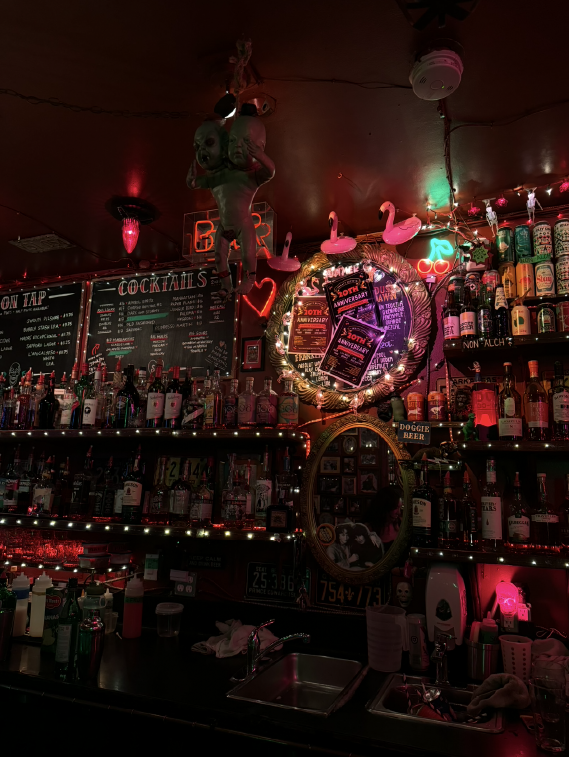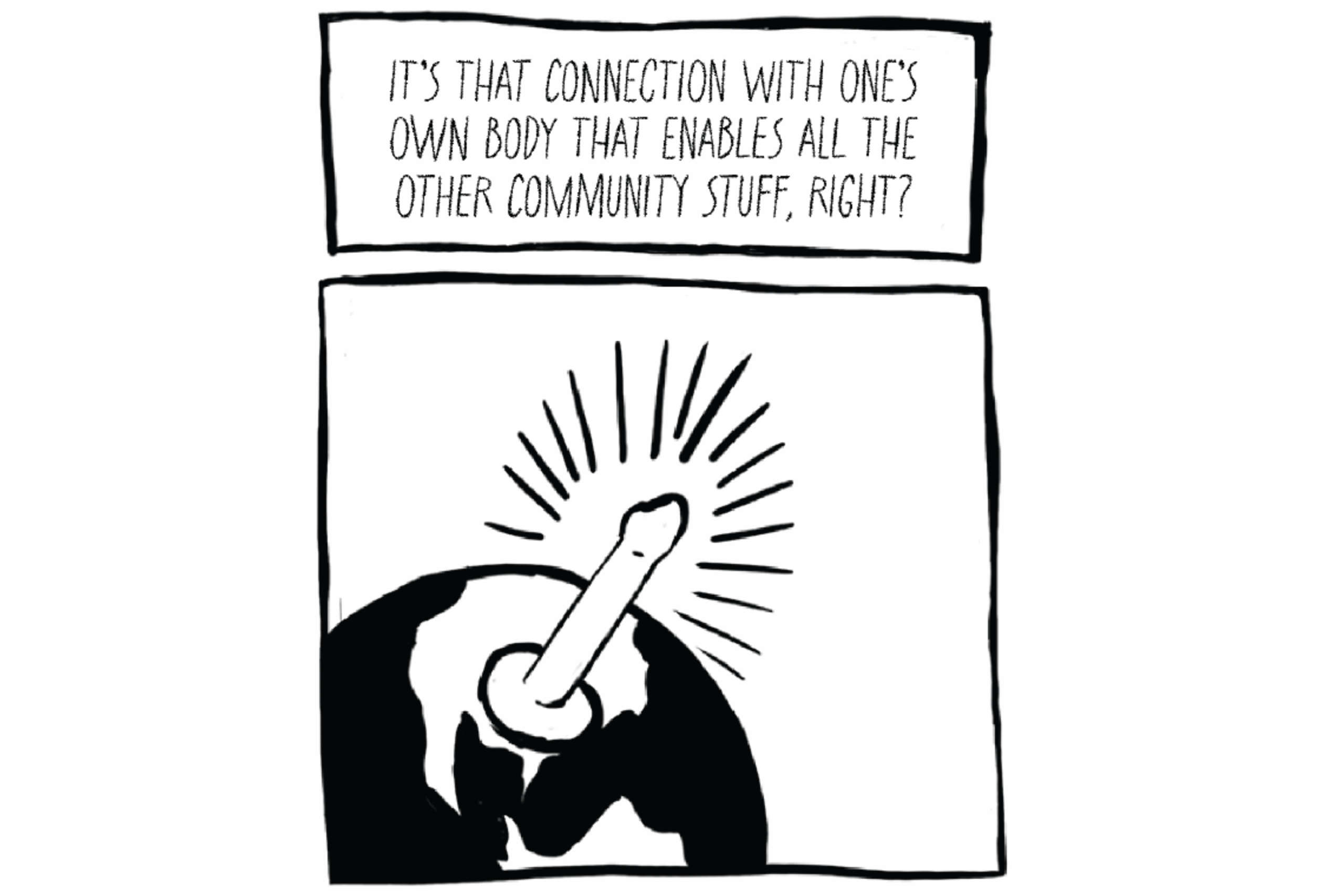A blast from the past: An open-air movie experience

By Zarmminaa Rehman
In the cool and crisp breeze of minus three degrees, I ventured out — my older sister in attendance — bundled in a winter jacket sporting a pink outfit underneath to channel my inner Galinda, all to watch Wicked—not at the trusty Cineplex, but from the comfort of a car.
Having driven past the 5-Drive-In theatre many times en route past Oakville, Ont., I mentally noted that one day, I might also head out after dark and enjoy a movie —just like in the popular teen drama Riverdale — at a drive-in theatre.
As we sat waiting in our car, headlights off, I stared at the blank, black screen. I took in the stillness of the world around me — no bustling of the city, no harsh lights illuminating the surroundings. At that moment, it was just me and the night, both waiting for what was to come next.
The digital car clock flashed 7:35 p.m., and the screen in front of me lit up. We tuned in to the radio for the introductory credits. The national anthem began to play against the background of a montage of “our home and native land.”
Staying true to the nostalgic appeal, an old-timey voice sounded from the car’s sound system, welcoming us to the drive-in theatre with 1950s-inspired cartoons depicting the rules and expectations of being at the theatre. Sadly, no Scotiabank card colonel popcorn ad popped up this time, but instead, Chilly Dilly came on screen: the personality pickle who was available to try at the concession stands. A mascot and a tasty treat.
ACT I: LET’S START FROM THE TOP
In the age of silent films, Claude V. Caver introduced one of the first drive-in experiences in Comanche, Texas, according to a Goodreads article. Cars were situated bumper to bumper with all eyes on the screen. No need for speakers, people simply enjoyed the film as it was.
In the 1920s, North America saw an increase in outdoor venues for enjoying movies. However, as described in a NJ.com news article, the birth of drive-in theatres as we know them today saw its humble beginnings when founder Richard Hollingshead, patented and opened the first drive-in theatre in Camden, New Jersey on June 6, 1933. Priced at 25 cents per person, families packed into their cars to enjoy this novel way of watching movies.
ACT II: EVERYBODY, ANYBODY…NOBODY?
The true boom and golden age of drive-in theatres was ushered in after the start of the baby boom and the end of World War II — the 1950s.
As families were reunited once more, the 1950s saw a change in the family dynamics, with more people moving out of the city. A boom in suburbanization meant more usage of cars and longer distances from traditional cinemas.
“…There’s a decline in movie attendance several years after the end of World War II,” explained Charlie Keil, professor at The Cinema Studies Institute and the department of history at the University of Toronto. “You can point to a number of factors that do lead to it but at least two of them are suburbanization…and then also television.”
What better pastime for the entire suburban family than a drive-in theatre?
Taking a look through Canada’s history, the first introduction to drive-in theatres began in 1946 at the inauguration of Skyway Drive-In Theatre located in Stoney Creek, Ont., according to The Hamilton Spectator.
By the time theatres opened in Canada, gone were the loudspeakers next to the screen, which caused unequal sound distribution. Now individual speakers placed next to parked cars offered a more tailored experience of watching movies in vehicles.
Originally founded in the 1950s, one of the largest single-screen drive-ins of its time was the Valley Drive-in Theatre located in Cambridge, N.S. Currently, it is run as a not-for-profit organization, catering to locals of the area and tourists alike.
“Back in the 2000s, the drive-in was taken over by an organization called the Coldbrook & the District Lions Club,” explained project chair Kirk Longmire. “Which [has] run it now in the last 25 years as a community service organization.”
For the Valley, July through August tends to be the busiest of seasons with both locals and tourists in attendance.
“It always amazes us even though we’ve been running it for 25 years, how often we see people every night that have said they’ve never been to a drive-in theatre in their life, even though they’ve lived in the province their entire life,” said Longmire.
With a split between families and young people, the demographic of drive-in theatres caters to both audiences by offering double features — a family-friendly screening followed by something a bit more mature deeper into the night.
From Longmire’s perspective, nostalgia is definitely a factor that keeps the thrill of drive-in theatres alive.
“I think most people look at it from a nostalgic perspective…a simpler time…a quieter time,” said Longmire. “At the same time, a lot of people come because we’re affordable.”
You get two movies for the price of one [and] you can make it a fairly inexpensive evening out with a family of three or four or five…”
Not all drive-ins began their journey in the 1950s. The appeal of a night of film-watching in your car saw a boom leading up to the COVID-19 pandemic — a social-distance-friendly entertainment option.
For Kennedy Jones, owner and operator of Interstellar Outdoor Cinema in Thunder Bay, Ont., the beginnings of their drive-in began in 2020 when a previous owner reached out at the beginning of the COVID-19 pandemic.
“Someone had approached us during the beginning of COVID and asked us if we wanted to purchase [Interstellar],” explained Jones. “So I gave them an offer for purchasing the equipment…the website and everything … [and] I took over and started doing drive-ins.”
For Jones, rather than a stationary setup, Interstellar is a mobile movie theatre, able to set up and take down the 30 feet by 18 feet screen (approximately nine by five metres) for the ultimate viewing experience, with some of Jones’ more memorable experiences holding a screening for a wedding.
“Someone I knew that I’d met through business had asked me…if we could do her wedding…and she wanted a Disney movie,” he recalled. Jones describes setting up the screen at the farm venue, under the night sky of stars — making it “just a really magical night.”
Everything went perfectly and it was a magical evening. It was really incredible”
Joining the list of the many filming locations for Netflix’s The Umbrella Academy, the significance of 5-Drive-In goes beyond my own first experience. A Master of digital media student at Toronto Metropolitan University, Maeve Fitzgerald recalled the memories of hitting the 5-Drive In with her family during the summers.
“I remember going when I was kid. My dad would always load up the back of the trunk with just mountains of snacks, cases [of] pop, and popcorn and chips and candies,” recalled Fitzgerald. “We wouldn’t go all that frequently, but a few times a summer and it was a good time.”
“You can just show up in your car, stay in it the whole night and then leave. All you need is a car with a radio, really.”
Fitzgerald describes it as a more affordable and charming movie-watching experience where one can even speak the entire time, without fear of bothering those around you — besides everyone in your car of course.
ACT III: WHEN THE NOVELTY WEARS OFF
In the years leading to the 1970s onward, cinemas and drive-in theatres saw a decrease in patrons due to the competition of Video Home System (VHS) tapes, movie rentals, televisions, and in the 21st century and DVDs. According to Made In Canada, 90 per cent of Canadians use streaming services which, according to Global Media Journal due to a wide variety of platforms has allowed streaming to gain a strong foothold in the entertainment industry.
“Theatres are not the only or even the primary way most films are viewed anymore,” added Keil. “Many of the major players in film production like Netflix and Amazon are themselves distributors [but] they’re primarily distributing films, not [to] theatres, but their streaming services.”
Jones expressed a similar sentiment with the costs of distribution and licensing fees.
“The struggle that I’ve been having is with distributors…and the distributors really do cost an arm and a leg,” he stated. “They could take 40 to 50 per cent of the revenue [so] it would be difficult enough to make a profit even without those costs. That’s what’s killing the industry, [it] is the distributor cost for licensing.”
Additionally, on top of costs of operation, the land which was originally purchased at cheaper prices now has gone up in real estate value, not to mention the area utilized by drive-in theatres that may go unused for several months — especially winter months.
In Canada, due to increasing urban development, drive-in theatres located on the outskirts of the city are being sought and prioritized for residential and commercial real estate.
Though charming of its own accord, drive-in theatres do have a whole host of accessibility issues which are more relevant than ever. One of the most prominent is car ownership.
Although the usage of automobiles most likely exceeds that of previous generations, The Week indicated that fewer young adults own cars. Additionally, cars need to be equipped with adequate and working radios to hear any sound at all, especially since the screens and drive-ins usually do not offer subtitles. Sure, it is possible to bring a portable radio but you may have to make a quick thrift shop trip before heading to the drive-in.
When the car and radio are not an issue, weather conditions can take away from the immersive experience. As mentioned by both Jones and Longmire, drive-ins tend to be busier in the summer months, leaving patrons at the risk of pesky critters with wings — like mosquitoes. Additionally, a hot and humid night may increase the need for air conditioning to be turned on every so often. In opposition, when visiting the drive-in in the early to late fall months, the cold air begs for some semblance of hot air from your car ventilation systems.
In traditional theatre venues, prices typically range from $16 for regular admission movies, to nearly $30 for IMAX, UltraAVX or 3D. However, special offers such as Tuesdays at Cineplex offer tickets at half price. At drive-ins, with prices tailored to the demographic, they range from $14 for one adult to $70 for a car with five adults, however, the prices are two-for-one as most drive-ins have double-feature showings.
GRAND FINALE: LOOKING FORWARD
The cost-to-profit ratio isn’t one that can be ignored, especially for small businesses, but for Jones, there is also value in the experiences and fun that people have at the drive-in.
“I’ve been doing events for 15 years…I could tell that [viewers] really enjoyed the experience,” mentioned Jones. “So for that reason, I would do it even at a loss, just for the fun of it.”
The golden age of drive-ins may be further into the past, however, that doesn’t dampen the spirit of Longmire and the team at The Valley Drive-in.
“A lot of people think that drive-in theatres are kind of a thing of the past [but] we really see a future for drive-ins. Will they be like the 1950s? Obviously not,” said Longmire. “There is a desire for people in communities to have a place like this where they can go.”
With competition from streaming, even traditional theatres face threats. Still, the experience of watching movies isn’t one that can easily be trumped — after all, we’re social creatures.
“As long as movie going isn’t seen as just an isolated single-person experience, there’ll always be room for the movie theatre dimension of watching films,” said Keil.
For Fitzgerald, she hopes for a similar community-centred setting, even beyond drive-ins, to enjoy movies.
“A drive-in theatre option for someone who doesn’t own a car like myself would be just like a community outdoor movie night,” she added. Fitzgerald hopes for a commonplace space for moviegoers to “just take a spot on the ground with a blanket, picnic style.”
Though I cannot definitively say if another drive-in visit is on the horizon for me, the hope and positivity from Kirk and Jones have fueled my wish that drive-ins continue to be part of the cinematic experience for newer generations.
Having lost too many experiences and spaces to the modernized world, I find a longing for drive-ins even in the age of streaming.
Unfamiliar and excited by drive-ins, I couldn’t have anticipated the lasting impression being seated in a below-zero car, blowing hot air to keep my hands warm would leave on me. I hope the memory stays pleasantly ingrained long enough for me to share it with someone else as wide-eyed and eager as me.






Leave a Reply